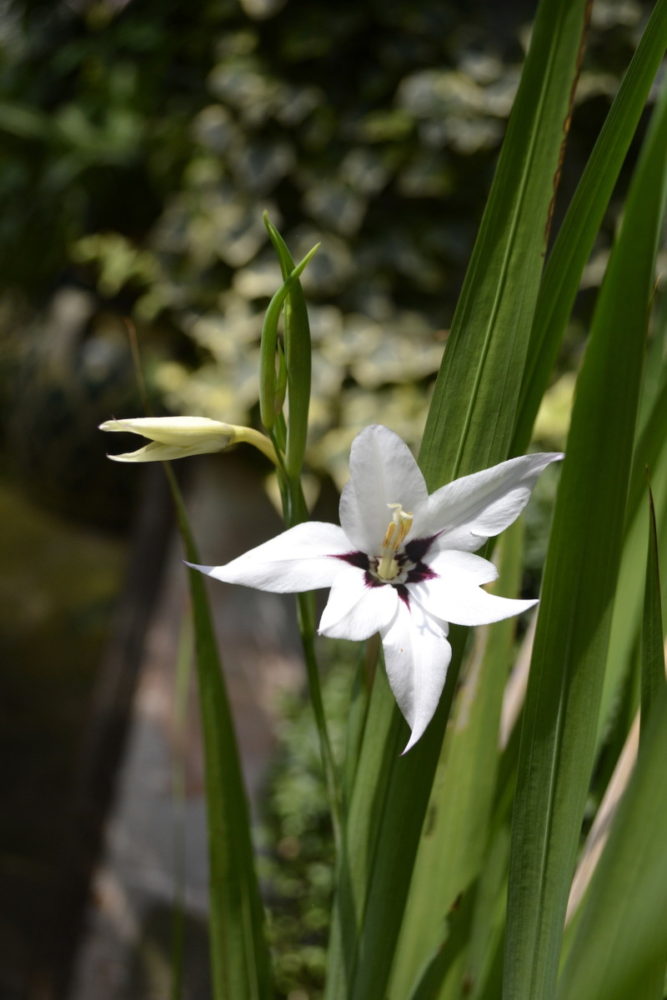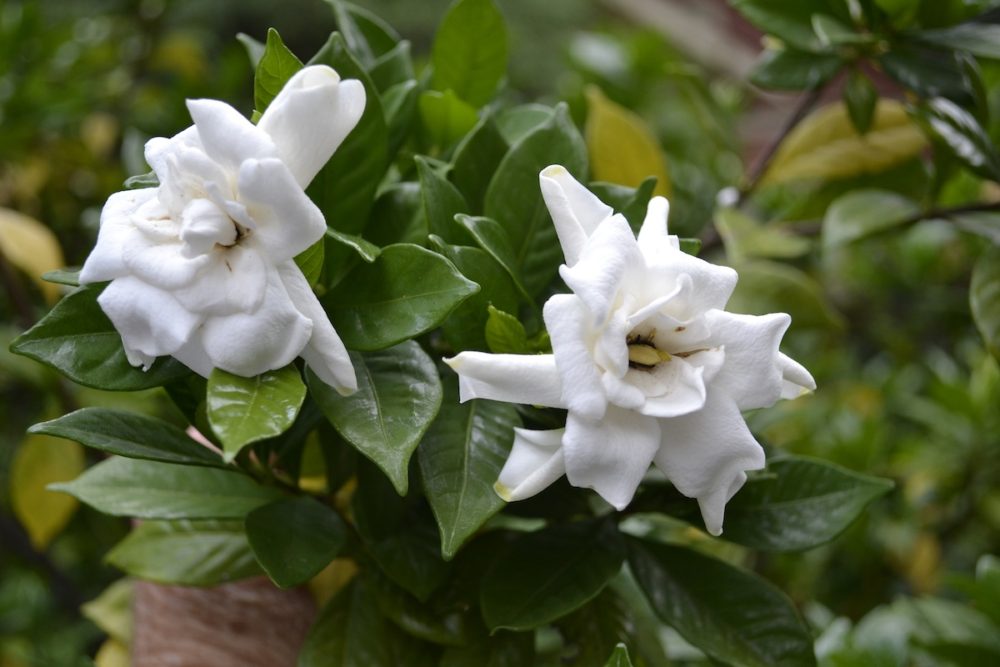Fragrance is the soul of my garden. As much as the form and texture and colors of the plants that inhabit my garden space, it is their fragrance that haunts me and elicits memories of childhood past, friends present, and dreams for the future.

A lone moon vine blossom (Ipomoea alba) on an arbor in Gainey’s garden
My favorite vine for fragrant flowers is the South American–native moon vine,
Ipomoea alba, in the Convolvulaceae family. Its flowers resemble those of its relative, the morning glory, and its leaves resemble those of another relative, the sweet potato vine.
Ipomoea comes from the Greek word
ips, meaning “a worm”—a reference to its climbing vine.
Alba is for the white flowers, which burst open in the late afternoon. The interior conformation looks like the most beautiful green star imposed on a white background. This flower quite literally unfolds before you—if you are there at the right moment—and begins immediately to emit its fragrance.
Ipomoea alba is easily grown from its very hard seeds. They require soaking overnight before planting, and you may consider scarification (cutting the seed coat), to ensure good germination. I like to plant my seeds in midsummer, as I find the vines prefer a little cooler weather. Where I live in the South, if you begin the growing in May or June you may find that the foliage overwhelms the blossoms, rendering fewer blooms. If you live in a colder climate, grow the plants earlier. You may also save your own seed of the moon vine by letting the earliest seedpods mature on the vine. By allowing these early flowers to complete their metamorphoses, you ensure that your seed will be completely mature at the end of the season—which is true of all seed-saving ventures.

Gainey grows peacock orchids (Gladiolus callianthus) in planters on his terrace so the fragrance will be close at hand.
I’m also enamored of the fragrance of peacock orchids (
Gladiolus callianthus). I grow these in pots placed around my terrace so the exotic blooms and fragrance will be close at hand. With its purple and white petals and orchid-like bloom, this flower is commonly called an orchid but is actually a gladiolus. Like most glads, it’s a native of Africa, but unlike most glads, which bloom in early summer, the peacock orchid is an August bloomer.

Philippine lilies (Lilium philippinense) share their fragrance in Gainey’s garden throughout the day.
Among the other fragrant flowers I enjoy is the Philippine lily (
Lilium philippinense), which shares its sweet aroma all day. Philippine lilies readily self-seed, and one bulb will furnish your garden with numerous plants. It produces hundreds of seedpods, which dry beautifully, and will bloom in two years from seed.

The rich scent of tuberose (Polianthes tuberosa) fills Gainey’s garden. He prefers the single-flower form of tuberose, as it has a more intense fragrance than the double-flower form.

Gainey’s collection of white fragrant flowers also includes lush gardenias (seen here) and and twining jasmines.
Occasionally I walk through my garden just to smell the mint and the lemon balm leaves brushed by my ankles. I often take a bouquet of lemon balm (
Melissa officinalis) to enjoy indoors, as I try not to emulate these lines from “Elegy Written in a Country Churchyard” by Thomas Gray:
Full many a gem of purest ray serene, The dark unfathomed caves of ocean bear: Full many a flower is born to blush unseen, And waste its sweetness on the desert air.
Written and photographed by Ryan Gainey
The late garden designer and author Ryan Gainey wrote a regular column in
Flower for many years, sharing his remarkable gardening knowledge and stories. See more from Gainey’s garden:
More Fragrant Flowers, Plants and Arrangements








